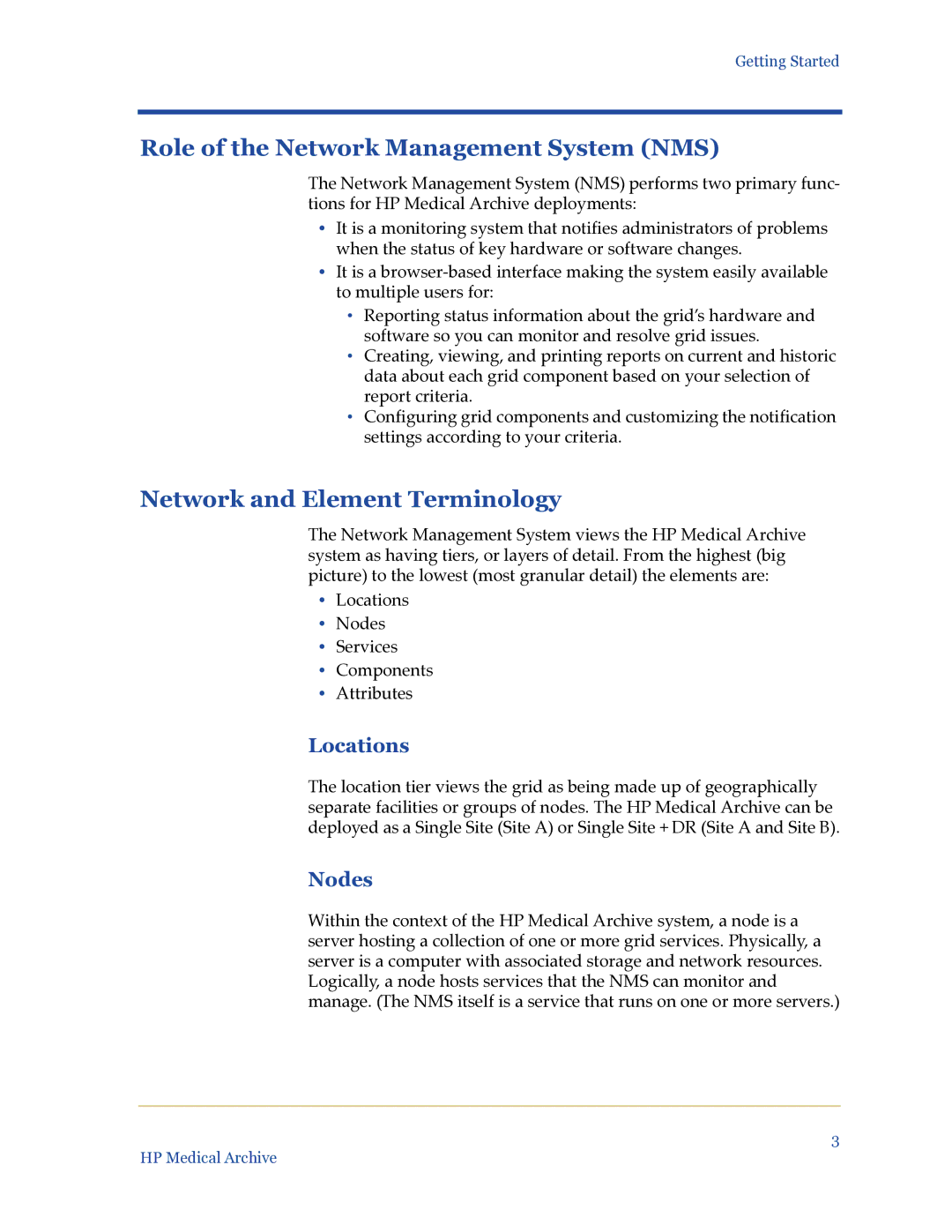
Getting Started
Role of the Network Management System (NMS)
The Network Management System (NMS) performs two primary func- tions for HP Medical Archive deployments:
•It is a monitoring system that notifies administrators of problems when the status of key hardware or software changes.
•It is a
•Reporting status information about the grid’s hardware and software so you can monitor and resolve grid issues.
•Creating, viewing, and printing reports on current and historic data about each grid component based on your selection of report criteria.
•Configuring grid components and customizing the notification settings according to your criteria.
Network and Element Terminology
The Network Management System views the HP Medical Archive system as having tiers, or layers of detail. From the highest (big picture) to the lowest (most granular detail) the elements are:
•Locations
•Nodes
•Services
•Components
•Attributes
Locations
The location tier views the grid as being made up of geographically separate facilities or groups of nodes. The HP Medical Archive can be deployed as a Single Site (Site A) or Single Site + DR (Site A and Site B).
Nodes
Within the context of the HP Medical Archive system, a node is a server hosting a collection of one or more grid services. Physically, a server is a computer with associated storage and network resources. Logically, a node hosts services that the NMS can monitor and manage. (The NMS itself is a service that runs on one or more servers.)
3
HP Medical Archive
